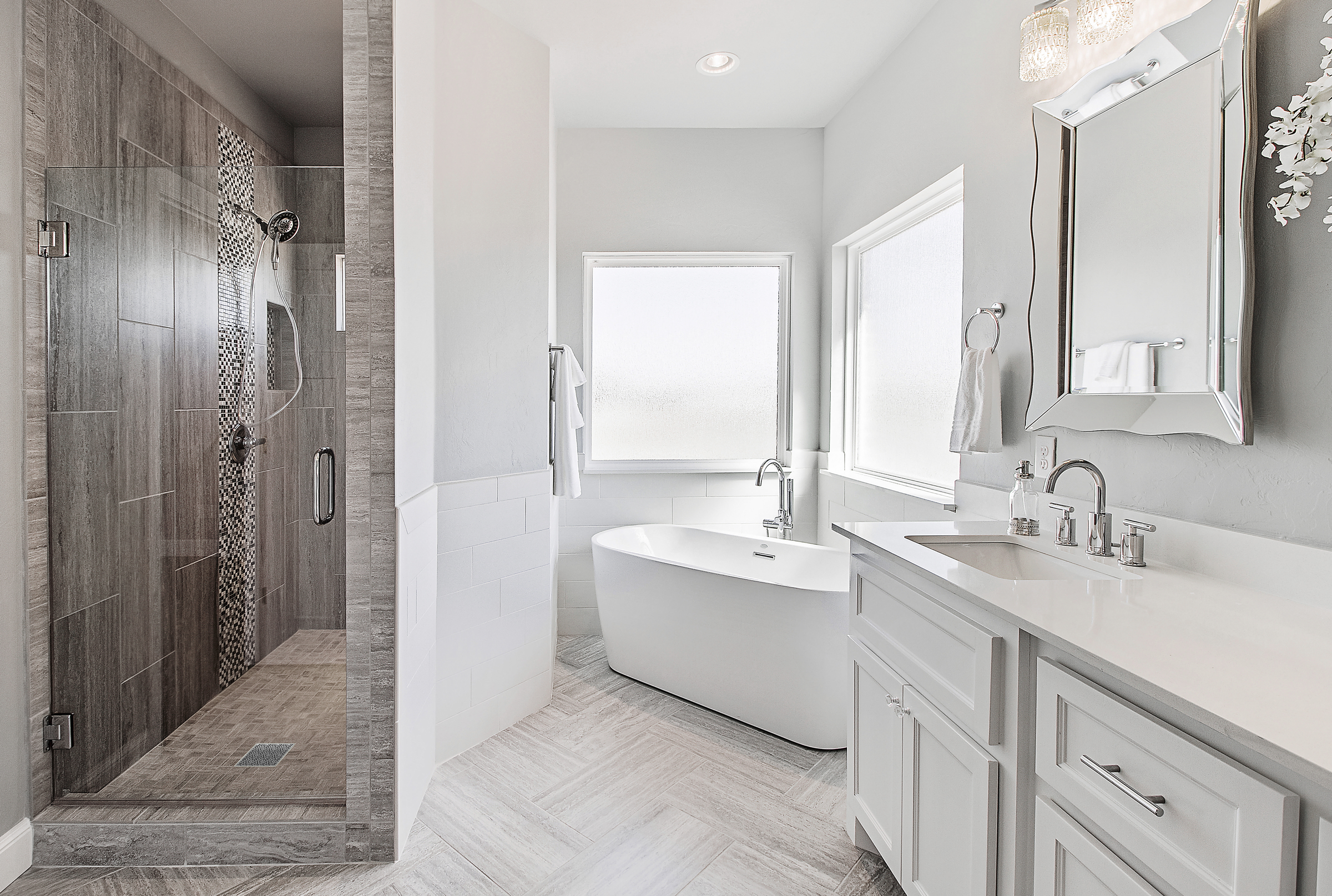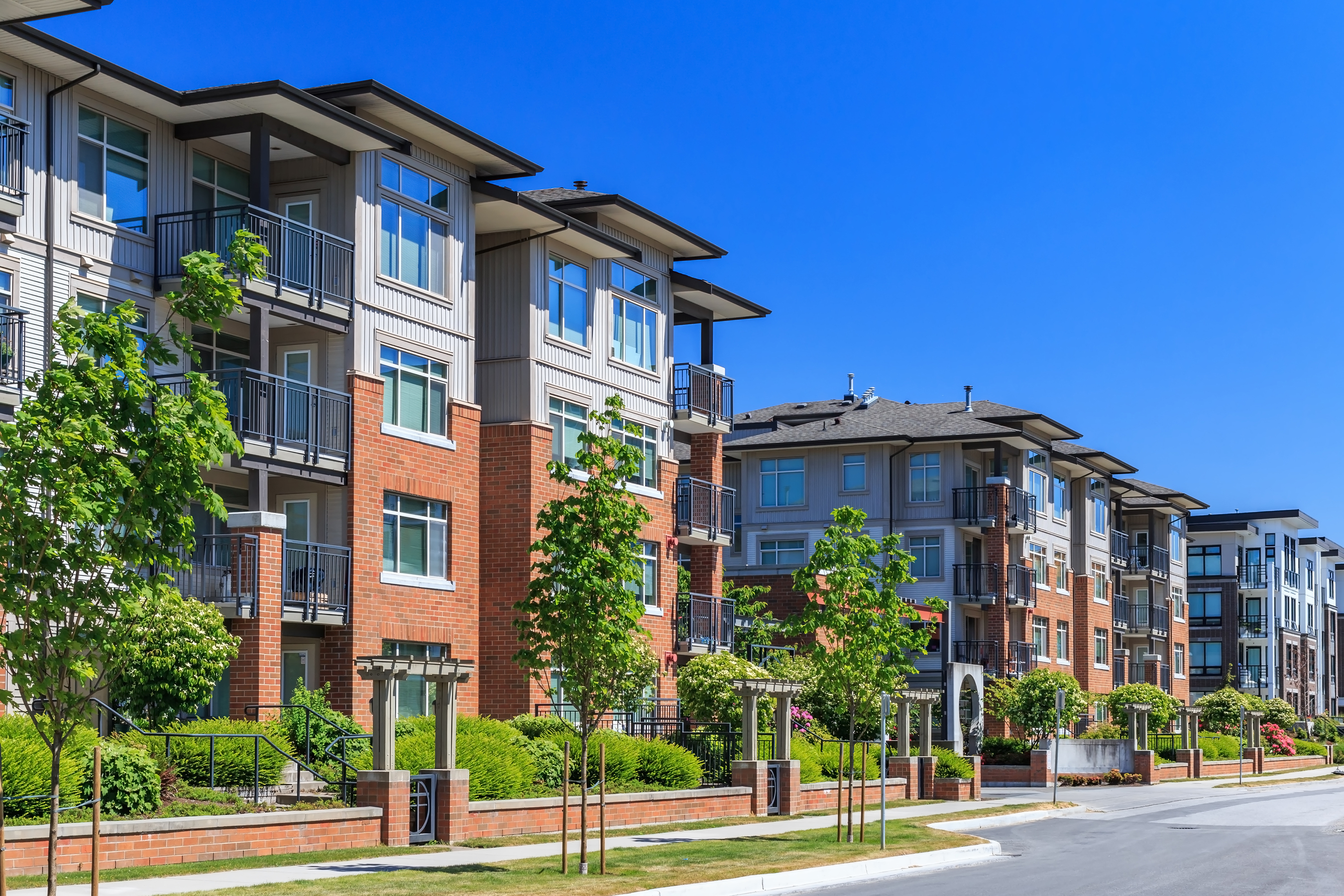Story at a glance:
- Low-flow WaterSense-certified faucets, toilets, and shower heads drastically reduce water consumption.
- Switching to LEDs, maximizing daylight, and installing energy-efficient appliances reduce energy usage.
Renovating a bathroom can be a big undertaking, especially seeing as many bathrooms tend to prioritize functionality over aesthetics—but that doesn’t mean you can’t achieve both, nor does it prevent you from implementing elements of sustainable design.
Indeed, bathrooms are perhaps one of the easiest rooms in a house to improve upon where sustainability is concerned, as there are a plethora of opportunities to both save water and make for a more energy-efficient home.
Tips for Sustainable Bathroom Renovation
If you’ve decided it’s time to upgrade your bathroom, these tips can help. Your project could be as simple as adding greenery or as in-depth as replacing all fixtures. These are some ways to make your bathroom more sustainable.
1. Prioritize Sustainable & Recycled Materials
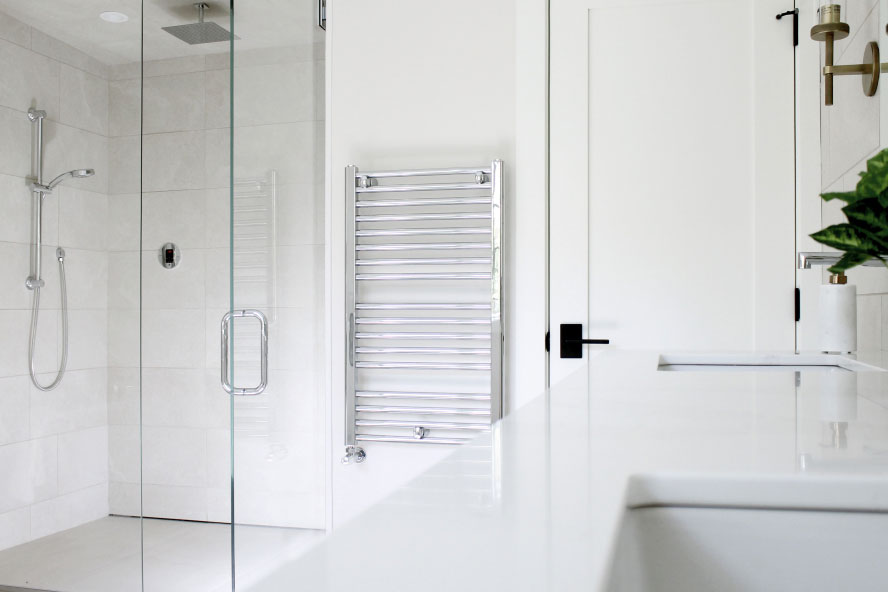
Material choices matter. Photo courtesy of Oatey Co.
As with any sort of upgrade or remodel, the materials used play an important role in achieving sustainability; bathroom renovations are no different. Natural materials like wood, bamboo, stone, and tile are ideal due to their low embodied carbon, but priority should be given to any materials that are free of Red List ingredients—or those chemicals and compounds deemed harmful by the International Living Future Institute.
In a similar vein, recycled materials—or at the very least, products containing recycled materials—should be used wherever possible as a means of extending the operational lifespan of materials that would otherwise end up in a landfill.
Bathroom cabinetry, for example, can be built from repurposed or reclaimed wood and make use of recycled handles and knobs. Recycled tile can be used along the walls or as flooring, and countertops can be constructed out of everything from recycled glass to reclaimed stone slabs.
It’s also worth looking into whether you can find suitable bathroom fixtures—such as sinks or tubs—at antique shops or buy them thrifted rather than purchasing entirely new products.
2. Use Nontoxic Paint
Traditional oil- or solvent-based paint often contains volatile organic compounds (VOCs) that off-gas harmful chemicals into the air over time, increasing the likelihood of occupants developing respiratory diseases and even certain cancers.
Low VOC paints, however, contain little to no worrisome chemicals and are typically water-based, meaning they also produce fewer fumes while drying. Due to stricter government regulations passed in recent years, most paint intended for household use is already relatively low in VOCs.
Of course, being low in VOCs isn’t the only requirement for paint used in bathroom settings, as the high moisture and humidity inherent to bathrooms requires paint to also be waterproof. Fortunately, many paint manufacturers offer low VOC options that are also waterproof and resistant to mold and mildew growth, which further improves indoor air quality.
3. Install Sustainable Flooring

Porcelain tile is a highly sustainable flooring option for bathrooms as it is highly durable, resistant to mold and mildew, and is made from inorganic natural materials. Photo courtesy of MILE®stone
As one of the most frequently used rooms in a home, bathrooms need to have floors capable of handling the increased traffic; fortunately, there are a number of durable, long-lasting, and sustainable flooring options on the market.
One of the most popular sustainable flooring options for bathrooms is porcelain tile—either new or recycled—as it is incredibly durable, water-resistant, and easy to clean. Porcelain tile also has natural resistance to bacteria, mold, and mildew growth, as it does not harbor moisture that promotes fungal growth—and it comes in a variety of styles, too. MILEstone’s Native line of tiles, for example, uses locally sourced, carbon-free materials to create porcelain tiling designed to mimic the appearance of hardwood flooring.
Similarly, cork flooring is naturally hypoallergenic and water resistant, especially when coated with a resinous topcoat. Cork flooring is also extremely sustainable in that cork trees do not need to be cut down for harvesting; the bark of cork oak trees is harvested once every nine years using a process that does not harm the tree itself. As an added bonus, cork flooring is springy, acts as an insulator, and does not get anywhere near as cold as tile flooring.
4. Consider a Linear Drain

Linear drain by Oatey Co. Photo courtesy of Oatey Co.
If your newly renovated bathroom includes a curbless shower rather than a bathtub, you’ll also need to think about the shower floor and drain system, as certain drains are more flexible than others when it comes to accommodating shower tiling pieces.
Linear drain systems—like those offered by Oatey, Co.—for example, only require that the shower floor slope in a single direction, rather than accommodate the four-way pitch made necessary by circular or square central drain units. This effectively eliminates any restrictions on tile size and slab material, making it easier to install large-format stone or porcelain tiles without having to alter their dimensions onsite, thereby reducing waste.
Oatley’s linear drains are also compatible with their recycled-content QuickDrain PET (polyethylene terephthalate) rigid-foam shower floor panels. “This environmentally friendly option is fabricated from recycled, plastic water and soda bottles,” Marlee Gannon, director of wholesale product and channel at Oatey, previously wrote for gb&d.
5. Invest in Low-Flow Fixtures & Appliances
When it comes to sustainably renovating a bathroom, fewer things are more important than conserving water. This can be achieved through the installation of low-flow fixtures and appliances.
Toilets
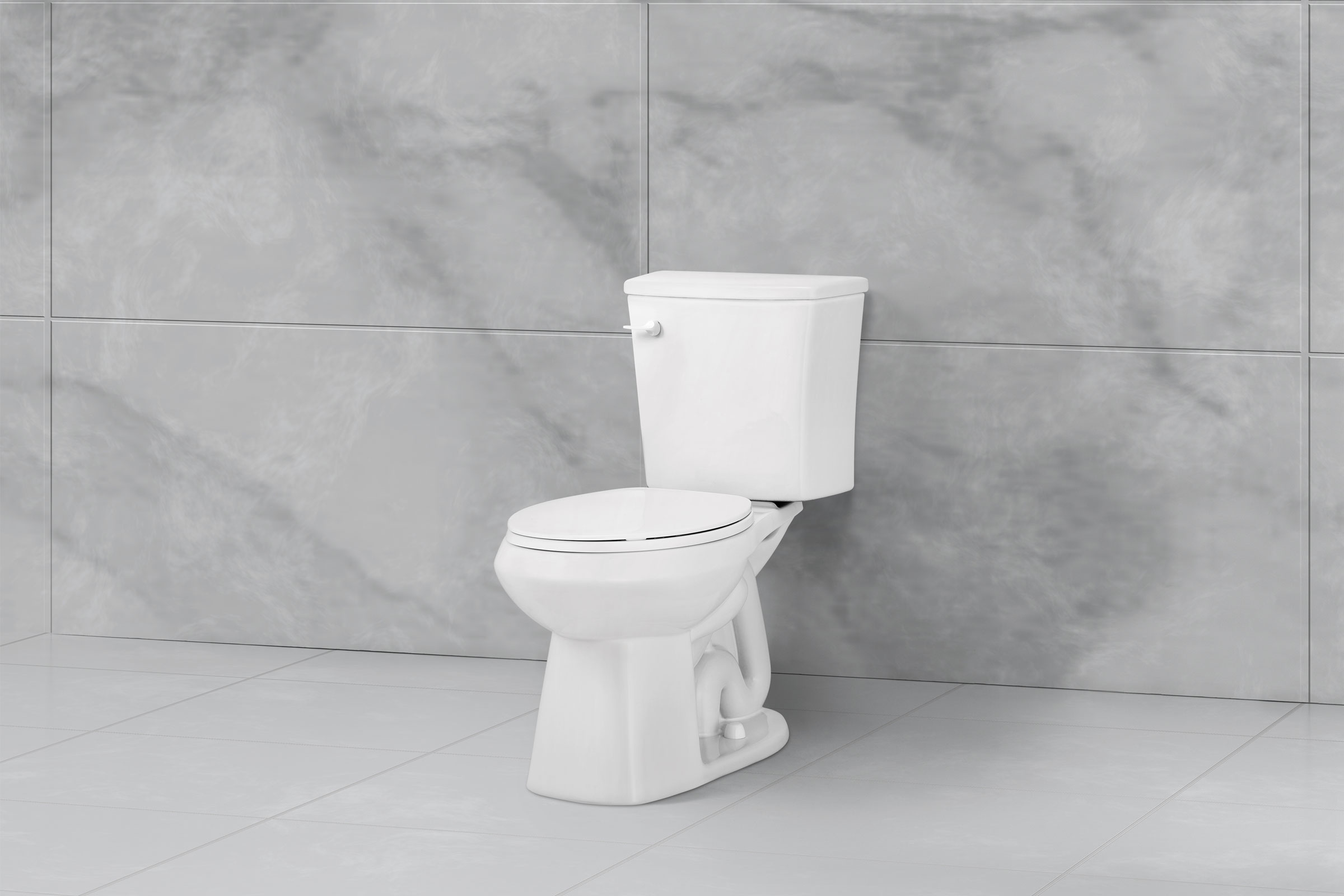
The type of toilet you choose contributes greatly to a project’s overall water efficiency—and the most efficient toilets only use less than 1.28 gallons per flush. Photo courtesy of Niagara
The EPA estimates toilets use approximately 27% of a household’s average water consumption per day—and that’s if your toilet is working properly. To help conserve water, replace your existing toilet with a low-flow alternative like one produced by Niagara, a leading manufacturer of high-performance bathroom fixtures.
In accordance with government plumbing standards, low-flow toilets are those which use no more than 1.6 gallons of water to flush—and if your house was built after 1994, chances are you already have one installed. If you live in an older home with a toilet that was built prior to 1994, you could be using up to 7 gallons of water per flush, meaning it’s definitely time for an upgrade.
Of course, not all low-flow toilets boast the same level of efficiency—if you really want to conserve water, look for an ultra-efficient model that uses 1.28 gallons or less per flush. “Thanks to decades of innovation, the ultra-high-efficiency toilets on the market today are some of the best-performing toilets available,” Jenni Steele, vice president of marketing at Niagara, previously told gb&d.
Highly efficient low-flow toilets can be identified by their WaterSense label, which signifies that they have passed rigorous independent laboratory testing with regard to performance and efficiency.
Showers
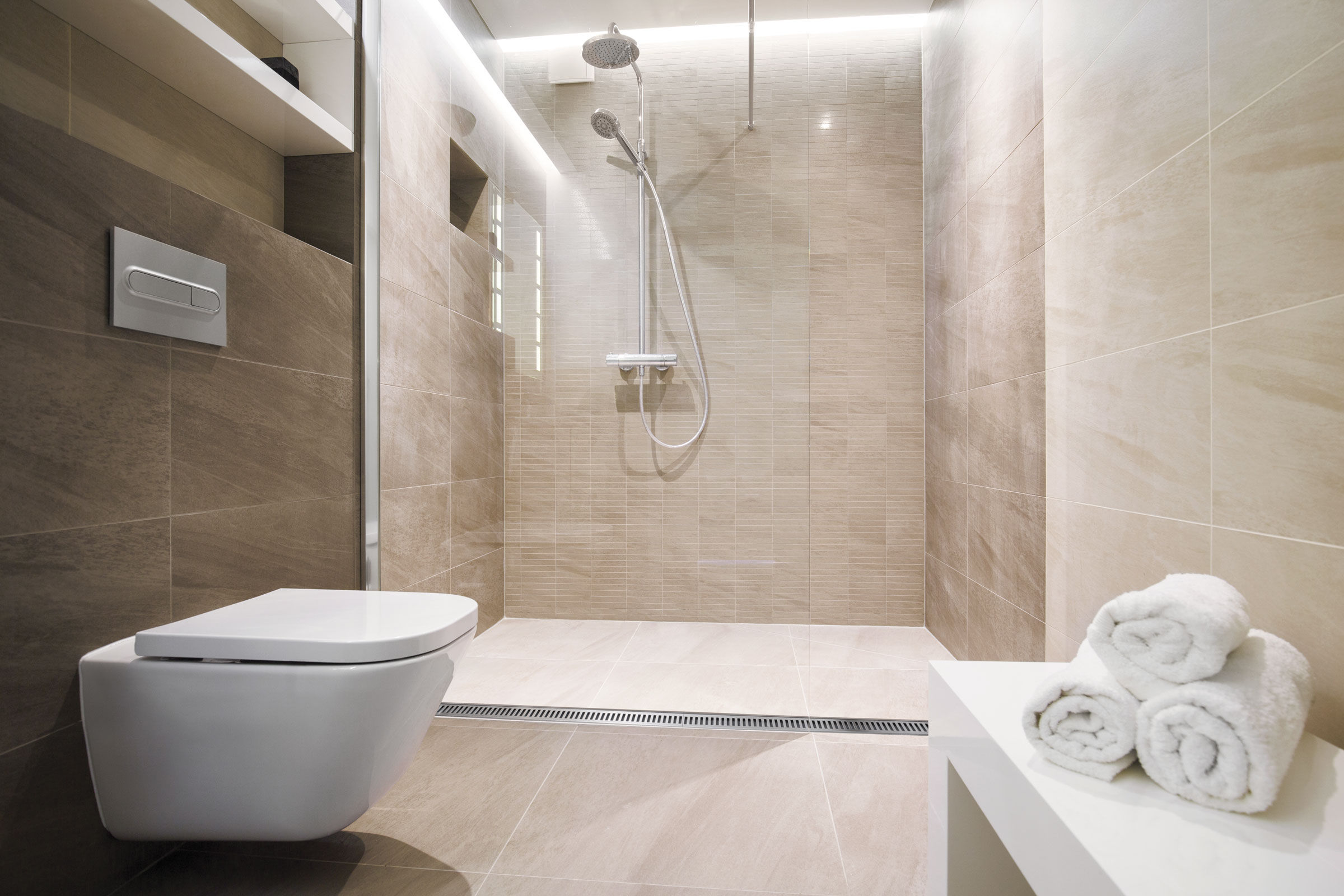
WaterSense certified shower-heads can help households save approximately 2,700 gallons of water each year. Photo courtesy of Oatey
While you’re at it, consider replacing your existing shower-head with a low-flow version as well. On average standard shower-heads use 2.5 gallons of water per minute—and depending on the type of shower system you have installed (e.g. one with multiple shower-heads), you may be using even more.
Low-flow WaterSense approved shower-heads, on the other hand, use no more than 2.0 gallons of water per minute, potentially saving households 2,700 gallons each year. What’s more, low-flow shower-heads also reduce demand on water heaters, meaning they’ll also help you save on energy costs.
Faucets

Water-saving low-flow faucets use under 1.5 gallons of water per minute and can reduce your bathroom sink’s water flow by approximately 30%. Photo courtesy of Oatey
While sink faucets typically account for the least amount of water used by bathroom fixtures, there’s still room for improvement where water usage is concerned. Older faucets typically flow at a rate of 1.5 to 2.2 gallons per minute, which is, by all accounts, more water than is necessary for most bathroom sinks.
Switching to a low-flow faucet that uses no more than 1.5 gallons per minute can reduce your bathroom sink’s water flow by 30% or more without compromising performance in the process, saving you money and reducing water heater usage.
6. Set Up a Rainwater-to-Flush System
As we’ve already established, toilets account for a large portion of the water used by bathrooms—and while low-flow toilets are a sustainable workaround, you can take things one step further by hooking your toilet up to a rainwater tank.
Collecting and harvesting rainwater is an excellent way to reduce stormwater runoff and repurpose precipitation, but its uses aren’t limited to just irrigation or watering plants. Gravity-fed rainwater tanks can be connected to your bathroom’s toilet as a means of filling the cistern for flushing purposes, reducing your bathroom’s official water consumption metrics by a large percent.
7. Install an Energy-Efficient Water Heater
Generally speaking water heaters are responsible for the majority of a bathroom’s energy use; it’s estimated that water heaters are the second-highest energy source in the home overall. To reduce your bathroom’s energy consumption, invest in an energy-efficient water heater, or those marked with an ENERGY STAR label.
Tankless water heaters, for example, are a great option due to the fact that they heat water on demand, rather than heating and storing excess water that may or may not actually be necessary. Of course, the true efficiency of a tankless water heater ultimately depends on how much hot water your household uses in a day.
A smaller household, for instance, or one that uses less than 41 gallons of hot water a day, can expect to use 24% to 34% less energy by switching to a tankless water heater. Larger households that use closer to 86 gallons of hot water a day, on the other hand, may only use 8% to 14% less energy—which still helps save money and energy in the long run.
8. Install Energy-Efficient Windows
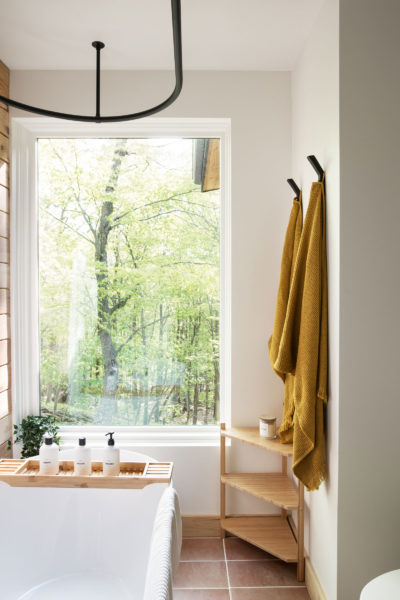
Photo by Lexi Taciak
Poorly installed or leaky windows account for a significant percentage of energy waste and can allow excess moisture to build up—something you definitely don’t want in your bathroom.
If you decide to replace existing windows, consider energy-efficient windows, or those windows bearing an ENERGY STAR label.
Typically energy-efficient windows feature higher quality weatherstripping for improved sealing, a frame with high thermal resistance, and dual- or triple-paned glass that contains inert argon gas between the layers. Energy efficiency is improved further by adding a laminate, coating, glaze, or temper to the glass that provides added protection against UV rays and solar heat gain without compromising natural daylight admittance.
9. Switch to LED Light Fixtures
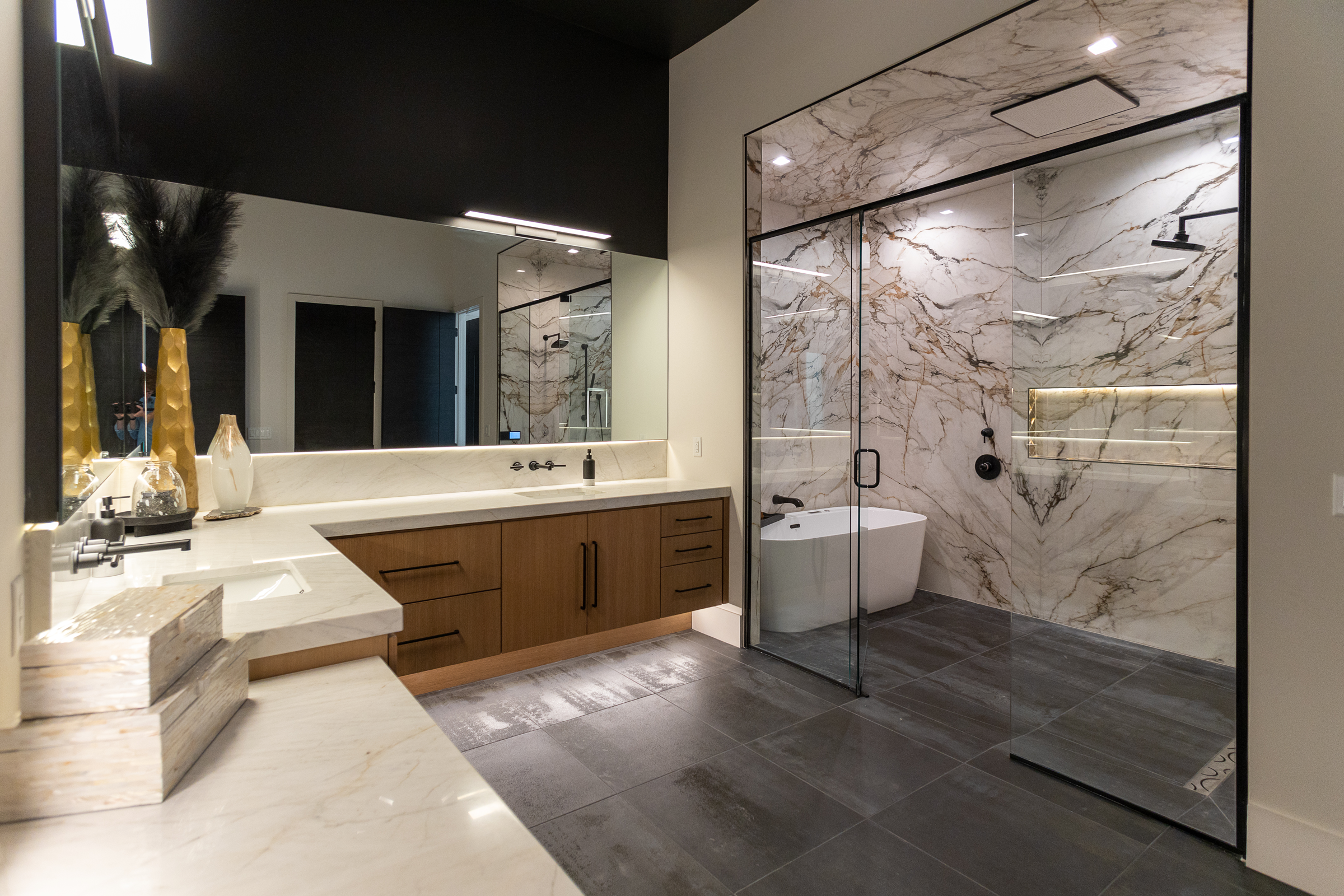
LED lighting serves to illuminate this residential master bath shower. Photo courtesy of American Lighting
Even if your bathroom has windows, you’ll still likely need some artificial lighting once the sun goes down—and LEDs are the most sustainable option.
Traditional fluorescent and incandescent light bulbs waste a large percentage of their energy by producing heat as well as light—LEDs, however, emit almost no heat whatsoever and use 75% to 90% less energy, according to the U.S. Department of Energy (DOE).
Due to their lack of filament, LEDs also last up to 25 times longer than incandescent and fluorescent bulbs, meaning they do not need to be replaced with the same frequency and contribute far less waste to landfills.
10. Install a Low-Energy Exhaust Fan
All bathrooms require an exhaust fan to help remove humid air produced while bathing or showering, but not all exhaust fans are created equally, especially when it comes to efficiency.
Fortunately, there are a variety of ENERGY STAR–certified options on the market, all of which use far less electricity (typically between 50 to 70% less), include humidity sensors to increase performance, and operate much quieter than their high-energy counterparts.
11. Incorporate Plants
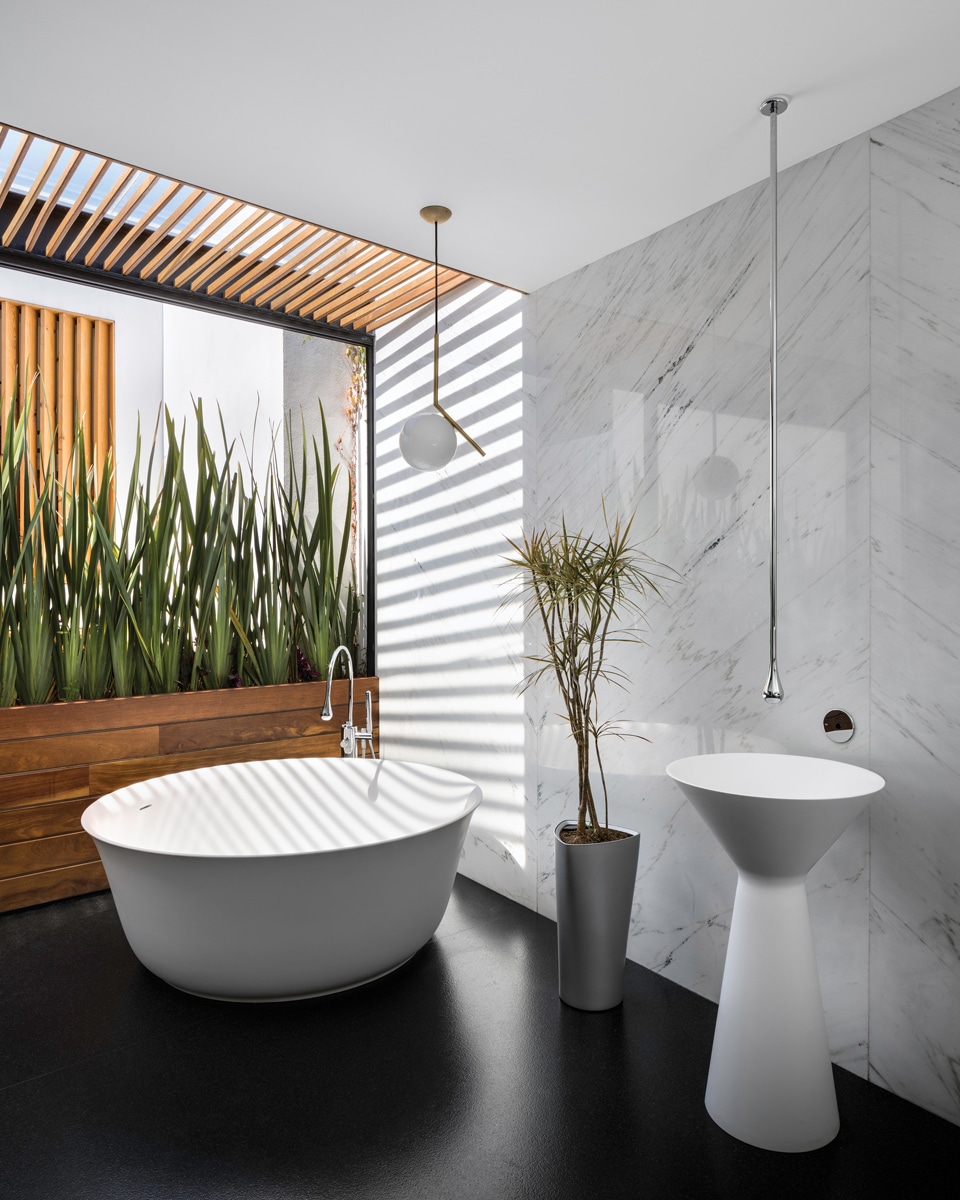
Adding plants to your bathroom helps absorb excess moisture and purify the air. Photo courtesy of taller paralelo
If you really want to make sure your renovated bathroom doesn’t experience moisture problems, consider incorporating a few plants into the bathroom’s design where possible.
Certain plants like begonias, cast-iron plants (Aspidistra elatior), ferns, philodendrons, and the like thrive in bathrooms as they absorb excess humidity through their leaves while also helping to purify the air; in removing moisture from the air, these plants also reduce the likelihood of mold and mildew growth.
12. Recycle Old Materials & Fixtures
Finally, once your bathroom renovation is finished, recycle what old materials you can and recycle, resell, or donate any bathroom fixtures—sinks, bathtubs, shower heads, faucets, etc.—that are still in good condition. Doing so helps reduce the amount of waste that ends up in landfills by extending the operational lifespan of those materials that still have life in them.

